What is Tree Topology in Computer Network?
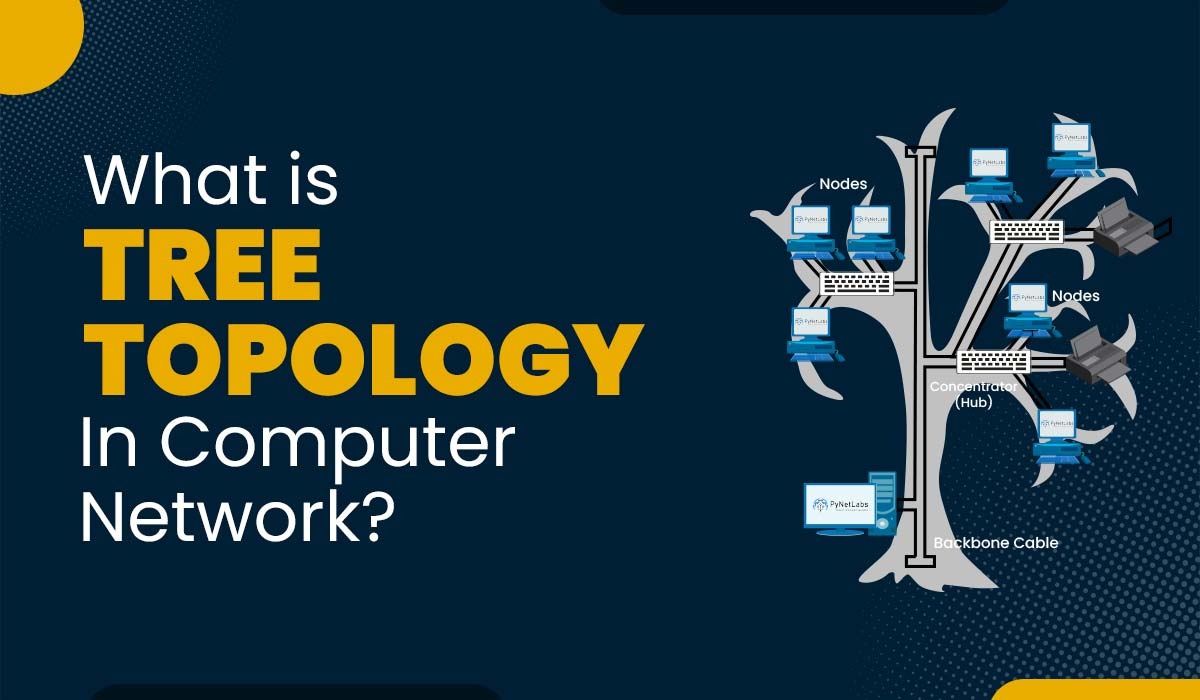
Computer networks consist of interconnected devices that are organized in different ways. The arrangement and communication between these devices are referred to as network topology. The topology chosen impacts the network’s performance, reliability, security, and scalability. There are types of network topologies, including bus, ring, star, mesh, and hybrid configurations. In this blog post, we will be focusing on one topology known as the tree topology. We will look into the definition of tree topology, its purpose, how it operates, and its different types, advantages, and disadvantages. All these network topologies are very important for network engineers to connect their networks. That is why, these topologies are covered in the very beginning of your networking journey, i.e., CCNA Training. Before getting into more details, let’s start with understanding this topology. In network topology, there exists a type called tree topology, which is also known as star bus topology. A tree topology, or star-bus topology, is a hybrid network topology in which star networks are interconnected via bus networks. Tree networks are organized hierarchically, allowing each node to have child nodes. A star network involves connecting all devices to a hub through a cable. The hub itself may be passive or active, depending on the presence of repeaters. On the other hand, a bus network connects all devices to a cable called the bus or backbone. It merges the features of both star and bus topologies. It includes a node known as the root that connects to one or more star networks called branches. Each branch can further extend into sub-branches, forming a structure resembling that of a tree. Below, we have shown the tree topology with the help of a diagram. Let’s now understand the purpose along with the application of this topology. The primary purpose of it is to create large and intricate networks that can span over long distances and support multiple devices. Tree network topology also offers hierarchical organizations as well as control over the network. Here are some practical applications of this topology: Let’s get into the functioning of tree network topology. The working of tree topology can be defined over various steps. Below we have explained all the steps and crucial elements. When we talk about the tree network topology, the parent node acts as the root of the tree. This root node can be a hub, switch, or router. These nodes are directly connected to the parent nodes. These are individual networks arranged in the form of star topology. Each primary node either represents a LAN (local area network) or a subnetwork. Primary nodes can be further branched out into secondary nodes. These are also the star-configured networks. Secondary nodes represent smaller subnetworks within the primary network. All the central hubs of the primary nodes are connected to a central backbone or bus. This backbone forms the trunk of the tree and allows communication between different primary nodes. But the question that arises now is how data is transmitted in tree topology. Data can be transmitted in a tree network topology in two ways. These are: Note: The data that is transmitted in this topology can either be broadcast or point-to-point. The transmitted data can be unidirectional as well as bidirectional. We now have a basic understanding of what tree topology in computer network is as well as its functioning. Let’s now move on to it’s different types. Tree Topology can be classified into 3 categories. These are: In the bus tree topology, a single cable connects each star network to the bus backbone. This reduces the number of cables needed. It also limits the scalability and reliability of the network. If there is a failure, in the bus backbone it affects the network. In the case of cluster tree topology, multiple cables connect each star network to the bus backbone. This increases redundancy as well as fault tolerance in the network. It also adds to the cost and complexity of cabling. Even if one cable fails, the network can still operate normally. Spanning tree topology is a kind of spanning tree protocol that is organized or configured using the spanning tree protocol. The Spanning Tree Protocol is a network protocol that ensures a loop-free topology for bridged or switched networks. Here are some featured of Tree Topology – Below, we have explained the advantages and disadvantages of tree topology in detail. This topology offers various advantages as compared to various other topologies. Some of these are: Some of the disadvantages of it are: These are the Tree Topology’s Advantages and Disadvantages. Tree topology is a type of topology that combines the features of both the star and bus topologies. Further at the top is the center or root node, which is further connected to primary or secondary nodes. It offers advantages such as scalability, flexibility, reliability, security, and better performance. Apart from its advantages, it has disadvantages, like high cost and complexity. A tree topology combines the characteristics of both the star and bus topology. In this type of topology, star-configured are directly connected to the linear bus backbone cable. One of the protocols used in tree topology is STP, i.e., Spanning Tree Protocol. Yes, tree topology is still utilized in many scenarios. One of many is connecting multiple branch offices to a central office. Tree topology is a hybrid network topology that combines the features of star and bus topologies. In this blog, we have explained a detailed explanation of this topology along with its functioning. We also have discussed its advantages and disadvantages in detail.Introduction
What is Tree Topology in Computer Networks?
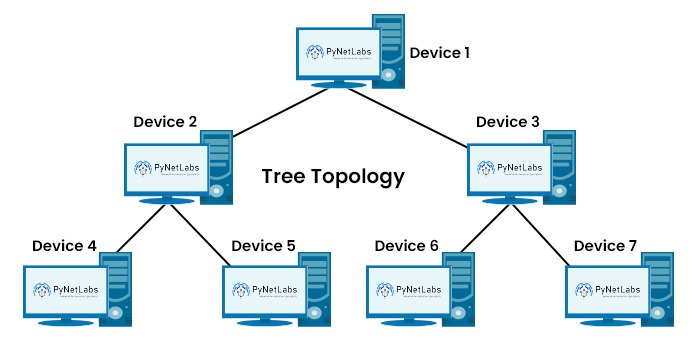
Purpose of Tree Topology
How Does Tree Topology Work?
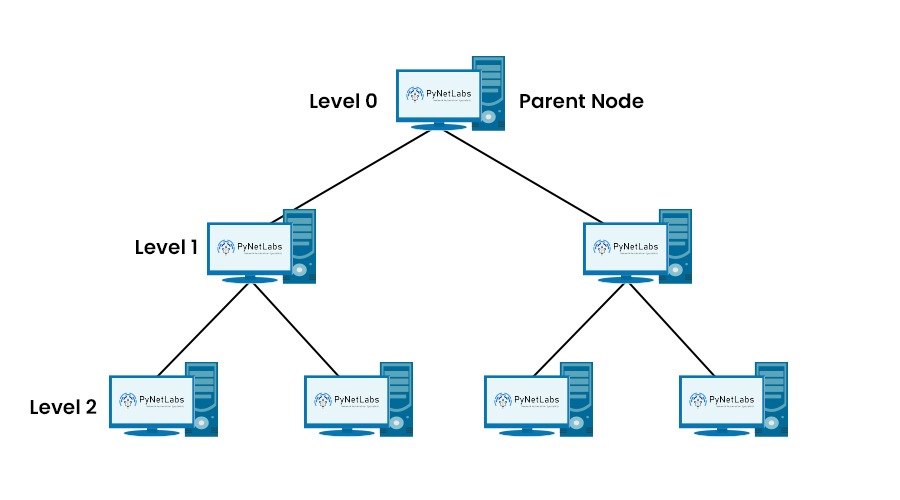
Root Node or Parent Node
Primary Nodes (Level 1)
Secondary Nodes (Level 2)
Connection to Backbone
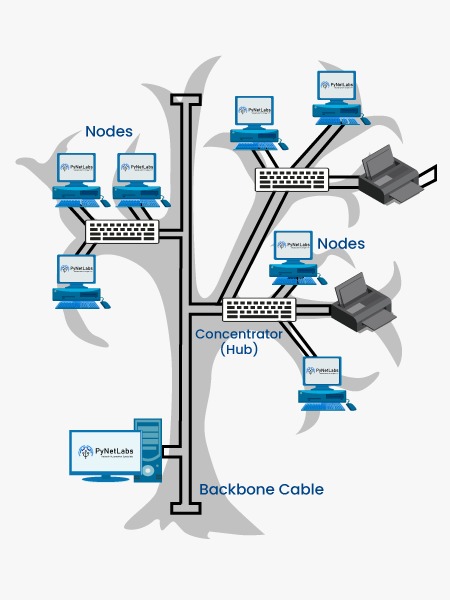
Types of Tree Topology
Bus Tree Topology
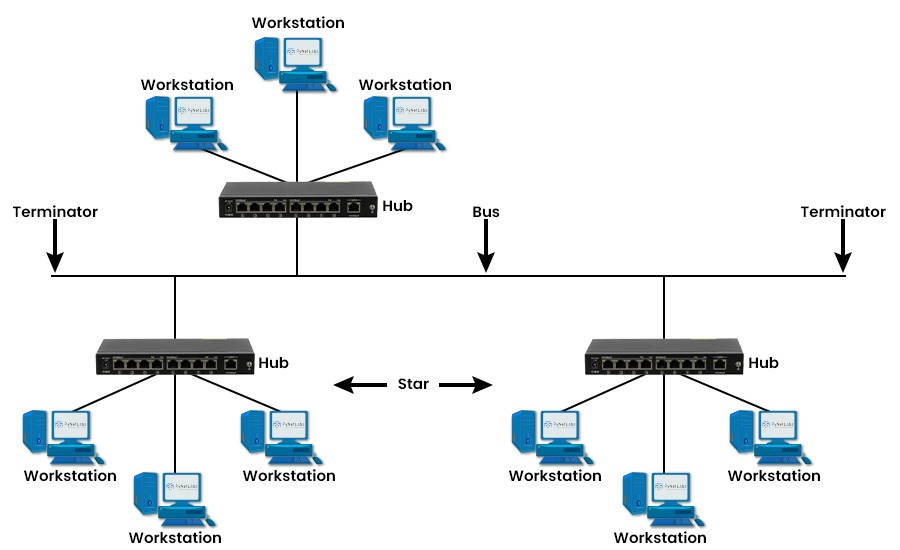
Cluster Tree Topology
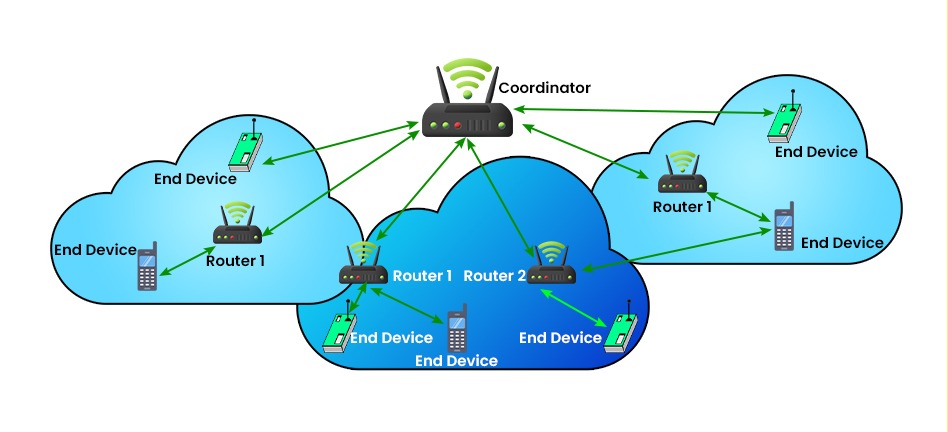
Spanning Tree Topology
Features of Tree Topology
Advantages of Tree Topology
Disadvantages of Tree Topology
Frequently Asked Questions
Q1. What is tree topology and its advantages and disadvantages?
Q2. What is tree topology used cable?
Q3. What protocol is used in tree topology?
Q4. Is tree topology still used?
Conclusion







